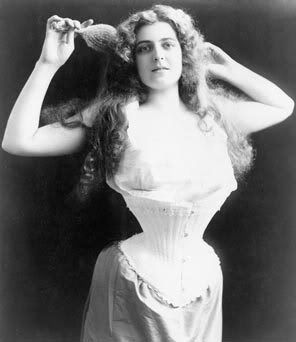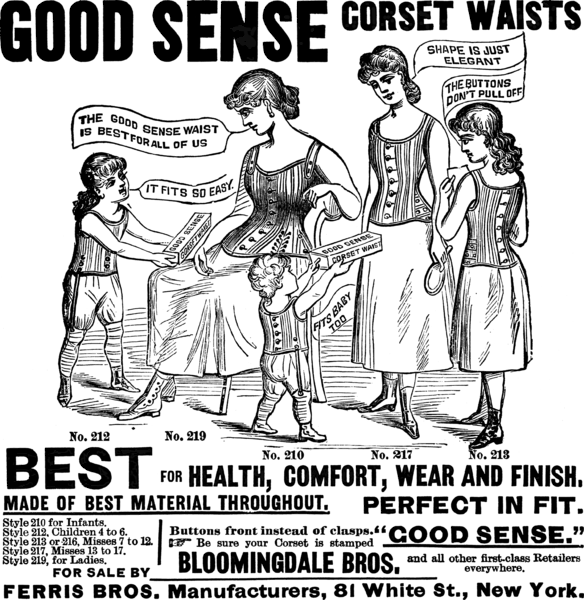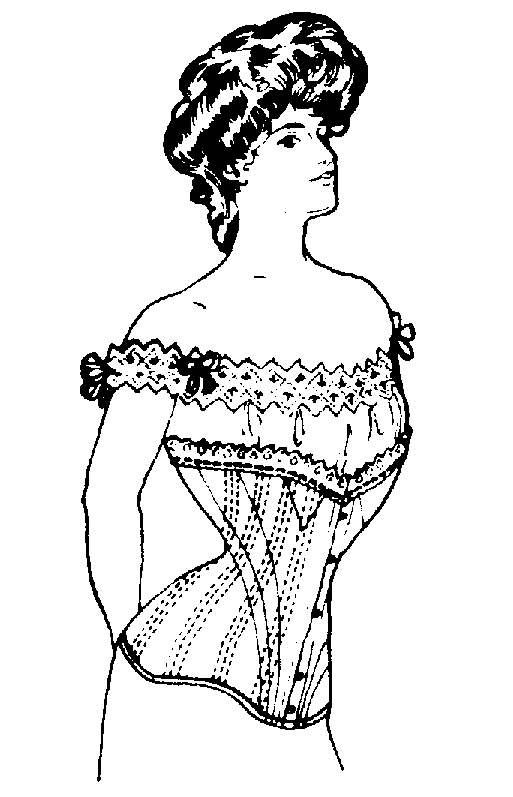

1908.
Tight-lacing became popular among all classes in the Victorian era. Corsets became more heavily boned in the 1840s, and steel was a popular reinforcement by 1850. Corsets evolved over the years to fit popular fashion. During the Edwardian period, the corset had an S-shape with a straight front and pushed out derriere. By World War I, the corset was beginning to fall out of style and was later replaced by girdles and elastic brassieres. Today, corsets are popular in fetish and BDSM culture.

1886 Advertisement.

S-Shaped Corset.
"The corset is, in economic theory, substantially a mutilation, undergone for the purpose of lowering the subject's vitality and rendering her permanently and obviously unfit for work." -Thorstein Veblen, The Theory of the Leisure Class: An Economic Study of Institutions (1899).
No comments:
Post a Comment